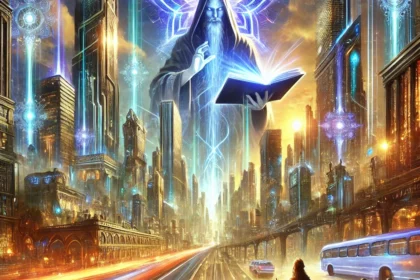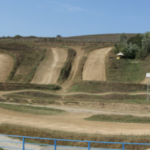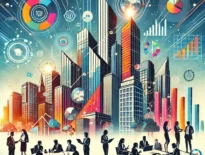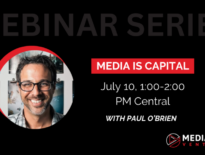
The explosive growth of specific cities throughout the world might be the best evidence of the impact of good old-fashioned marketing. Not advertising mind you, but marketing: understanding what you have, for whom, why they care, and delivering that to them.
The last 25 years or so have witnessed the transformation of our world from analog to digital; and in that, the fact that Silicon Valley led the way while other places required time to develop the experience with the internet necessary to get the respective local economies through their “digital transformation.” As local workforces learned how to use the internet as effectively as those at its epicenter, and people were reskilled from traditional industries into more software engineering, web development, app development, and internet roles, cities have been able to boom in this new economy.
Raising a very valid question of WHY some cities attracted the shift from Silicon Valley while others, other very notable, appealing, and capable cities, failed to attract as much.
Why Silicon Valley shifted toward Austin instead of, say, Miami
Miami, certainly popular, vibrant, viable, growing, and international… what made Austin pop most, next, more than there, or Detroit, Chicago, or even the startup popular Denver or Boulder?
Austin’s evolution isn’t the result of “tech,” infrastructure development, or startup hubs. Hopefully you’re well aware of the fact that “if you build it, they will come,” is only true in baseball movies because that notion is well known to marketers, who too often get frustrated with tech founders who think their startup will work merely because they built an MVP that’s better than what’s out there. Austin having tech, infrastructure to grow, and companies, doesn’t inherently CAUSE innovation and entrepreneurship to shift this direction; having built it, doesn’t mean anyone knows about it, wants it, or cares.
Austin is the result of a series of very well-known identities that established a distinctly Austin brand. This often happened unintentionally, and assuredly happened organically rather than with intention throughout, but because it did happen, we can learn from it to develop other innovative ecosystems by appreciating that it’s the marketing and storytelling that were the catalyst for Austin’s startup boom.
In very rough chronological order identities associated with Austin, Texas:
- Keep Austin Weird. Really not a promotional campaign as old as the reason for it, this characteristic of Austin hearkens back to the 60s. The “Keep It…” campaign developed later, amusingly, as a counterculture; yet it fits Austin so well because ironically, the identity has a distinctly Texan quality to it. No, not cowboys, wildcatters, or barbeque, Keeping Austin Weird sort of fits with Texas’ fierce sense of independence and trying to ensure this place is not like elsewhere.
- Back in the eighties and nineties Austin had the potential to be the technology hub it is becoming today as, unbeknownst to much of today’s tech startup scene, the Austin tech scene is as old as the semiconductor. Samsung doubling down on Central Texas isn’t really a new thing, Motorola, Freescale, and more used to call Austin home, and these hard tech roots remain part of the DNA here. Where you can derive how intentional development (economic development) of being a hub for entrepreneurs and innovation needs to parallel this marketing and storytelling I’m exploring with you here, is evident in that while Austin had it (has it in hard tech), it’s Silicon Valley that intentionally ran with what that was to turn it into what it is (semiconductor to PC to internet to mobile). Austin isn’t new in tech, it’s getting its groove back, so to speak, having caught up to speed as I mentioned above other cities must do. Austin’s *intention* moved from that hard tech into…
- The Live Music Capital of the World! And it was sort of true. Let’s call it true enough as when it comes to Austin’s identity, it’s not that of film, art, or other cultural characteristics but music. True enough that people know it and that gave rise to the incredible attention on ACL and SXSW (which, help tell the story of Austin and tech by launching SXSW Interactive, getting Austin’s tech groove back). Pause here for a moment because it’s in this series of things that we can start to see how Austin in fact became ideal for startups, and not just tech… Silicon Valley wasn’t ONLY tech (no one wants to just go work in tech); Silicon Valley was born because of their own story woven with Berkley, Haight Ashbury, hippies protesting Vietnam, and culture. The culture similar to Austin’s Weird and Live Music, that with tech, evolved into being called the…
- Best Place for Startups, a quality that really started in the mid-2000’s thanks to, and I know my fellow Austinites will despise me for drawing this correlation but thanks to so many from N. California are moving here. But what we’re talking about here is WHY they moved to Austin and not somewhere else – see it yet? Austin’s economy, weather, or quality of life wasn’t radically different than many other places, and it wasn’t because of the old Semiconductor or hard tech work that California’s internet pioneers thought, “Head East! To Austin!” It’s because Austin has appealing characteristics KNOWN to people. Austinites always had the weird, the music, and more, but again, it being built doesn’t make a thing successful, it was the branding, stories, and marketing to make it all make sense, that drew millions. After experiencing a couple of bubble bursts in the Valley, and dealing with the explosive real estate costs, droves of people started saying, “there has to be someplace else, some place better.” Austin grabbed that and given those identies of the preceding years, being that alternative was obvious.
- Most recently, though it’s still claimed to be so for “startups,” the Austin identity seems to be evolving to being the Best Place for Millennials or to Start a Business. Why? Austin is home to an exceptional number of freelance professionals, coworking spaces, consultants, and that startup identity driving people here who a) don’t want to be in N. California b) don’t want to or can’t afford it and c) are starting lower capital-intensive businesses. That is, we’ve recognized that without the substantial capital sources and high-risk tech R&D investments, we’re inclined toward things that are a quicker path to revenue hence – known new business models and a place for entrepreneurs to make money.
- And that, blended with our music and creative past, is why I’ve been encouraging that Austin’s narrative should shift from Live Music Capital or Best for Startups to the convergence of the two, the Creator Capital of the World. We’ll see.
Now look at that progression. Was it planned from the beginning? Certainly not. But it is a series of pivots that build upon the best of the preceding culture/economy and evangelize tremendous potential. THAT, being broadly known, is what drives people to a city and while that wasn’t planned from the beginning, you can be certain that each stage is intentionally development, messaged, and embraced (by many; not all).
People have and always will move to economic opportunity first and cultural fit (being somewhere personally appealing) second. The prominently considered reasons people buy a home: schools, value, job, etc. are valid but they are only valid in as much as they help establish where people live, not WHY they live there. People moved to Detroit to work in the automobile industry, they inundated LA to get into film, and they flocked to Austin because of the counter-culture yet familiar and prosperous economy of entrepreneurship and independence – but that’s not why they wanted to be there nor how they knew to be there – each had a history of culture and character, known to the world, that drew the world’s attention.






Great post.??
We may want to add the “ apartments capital of the world “ to the list as well ?
The follow-up to this I want to see why people leave. The number of Texpats I’ve meet in Colorado after leaving almost two years ago is insane. Most of them are from Austin and surrounding areas.
Well put! I’d add that Austin like many other growing innovative ecosystems, could perhaps learn from what made it work originally, becoming a desired destination.
When multiple semiconductors had roots in Austin, they worked closely with public policy and institutions, to ‘make it work’.
Ecosystems that accelerate in growth and thrive often become fractured, siloing efforts of each innovative ecosystem participant, public sector, private sector, capital, and entrepreneurs.
Four important pieces of the puzzle are each Innovatove Ecosystem participant within an industry working closely together, the more important one in such fast paced environments is now a person or group helping each industry work closer together accelerating vertical growth and economic development.
I came back for an event recently and was struck by how many people I knew and recognized from events 3 and even 8 years ago. Part of what is really making this successful is the nurturing of an idea that takes many forms over the years, and the regular cross-pollination through events and repeated connections that allows that idea to move through to the next step. And of course, the clarity of messaging that HAS to happen when you’re explaining what you build/do, over and over and over again, and keep getting feedback. We like a clear story that we can bite into, connect with, and then apply to our lives to see if it would make them better. Buying into an idea is like buying a house or a car. You have to explore it, imagine yourself in it, and then decide that you would really benefit or better, life moving forward would be nearly intolerable without it because NOW you are burdened with the knowledge that it exists. Storytelling is powerful that way.
The characteristics they’re known for as a catalyst makes sense. It’s occupied a brand position in the minds of people, and I think the new one proposed about creators makes sense too.
It’s more about why you stay, than why you arrive. You arrive for a job, but stay for a lifestyle.
Cities draw talent like magnets. Compelling story allures minds.
Kenny Madden certainly true lately, isn’t it?
Travis Swicegood heat and traffic
Or rather, misled expectations. The problem with hype without depth, is people are led to believe whatever is being promoted must be perfect or ideal.
The fact is, it’s 109 today. Most people consider that unbearably hot, especially coming from the Bay Area. Turning around and going to Colorado isn’t surprising.
[…] See also Marketing and Storytelling Manifest a Startup City […]
[…] hiring like you’re building an app. Start hiring like you’re building a movement. You can always find someone to write user stories. It’s a hell of a lot harder to find someone […]
[…] perpetuates ignorance about your market but that just makes it all the more important that you step it up and communicate both regional distinction and opportunity beyond Our […]
[…] as continental numbers boom, Botswana isn’t part of the story. H1?2025’s 238 funded startups? None from Botswana feature. The hot sectors have VC velocity, but […]
[…] itself the same way, blending creative grit with entrepreneurial infrastructure. The Bay Area was once beat poets and hippies before it was venture capital. Every innovation hub starts as […]
[…] New Mexico does better than most on physical infrastructure. It’s still weak on relational infrastructure (the connective tissue of mentors, repeat founders, and capital that easily crosses sectors) the thing I push in “Marketing and Storytelling Manifest a Startup City” […]